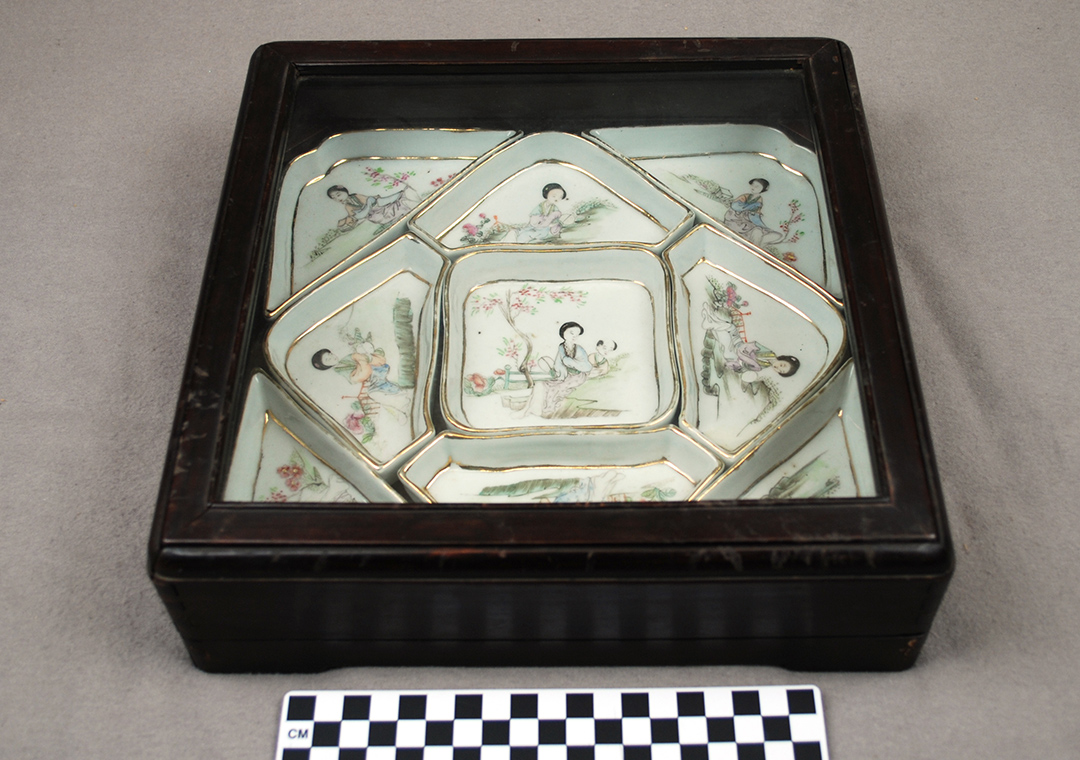The above tray is a Tray of Togetherness which is used during the celebration of the Chinese New Year. This particular tray consists of nine china dishes that are hand painted with different images of Chinese women. The dishes are housed in a wooden box that is made of teak and has a hand rubbed finish. The tray has a glass lid which fits quite snugly around the base. The dishes usually have different sweets and snacks in them that are considered good luck in the new year.
The Chinese New Year is a very important celebration in China and anywhere there is a large Chinese population. The date of the start of the new year changes because it is based on a lunisolar (based in the cycles of the moon instead of the sun) calendar. This year the new year begins on Friday, January 31. The Chinese New Year starts with the New Moon on the first day and then ends on the day of the full moon which is 15 days later. This is why traditionally the celebration would last 15 days in total.
A Tray of Togetherness usually consists of 8 or 9 dishes which are considered lucky numbers in most Asian cultures. The number 8 is considered lucky because of its symmetry and also the sound of the word for 8 is similar in sound to the words for prosperity and wealth. The number 9 is considered extremely lucky because it is the number that is associated with the emperor and also the sound of the word for 9 is similar to the sound of the word for long-lasting. Most trays consist of either 8 or 9 dishes for these reasons.
The foods that are placed in the trays are selected based on how lucky they are considered. A food is considered lucky based on the sound of the name of the food and the sound of another word, such as prosperity, life, wealth, health, love, long-lasting, etc. Some foods that could end up being used to makeup these trays are apples, apricots, cashew nuts, melon, lychee, noodles, rice, pumpkin, pomegranates and many others. Apples are considered symbols of wisdom and peace, while melon is a symbol of close family ties. A cashew nut is symbolic of gold or wealth because the nut resembles a gold bar from ancient times. During the Chinese New Year celebration these trays are placed out for guests to eat from during their visit and so with these foods the hosts are wishing good luck in the new year.
The Chinese New Year is full of traditions and important observances that are kept so that the the coming year is full of prosperity. If you would like to learn more about the Chinese New Year or Asian culture for that matter, please check our calendar of events at UTSA Institute of Texan Cultures for our annual Asian Festival.
